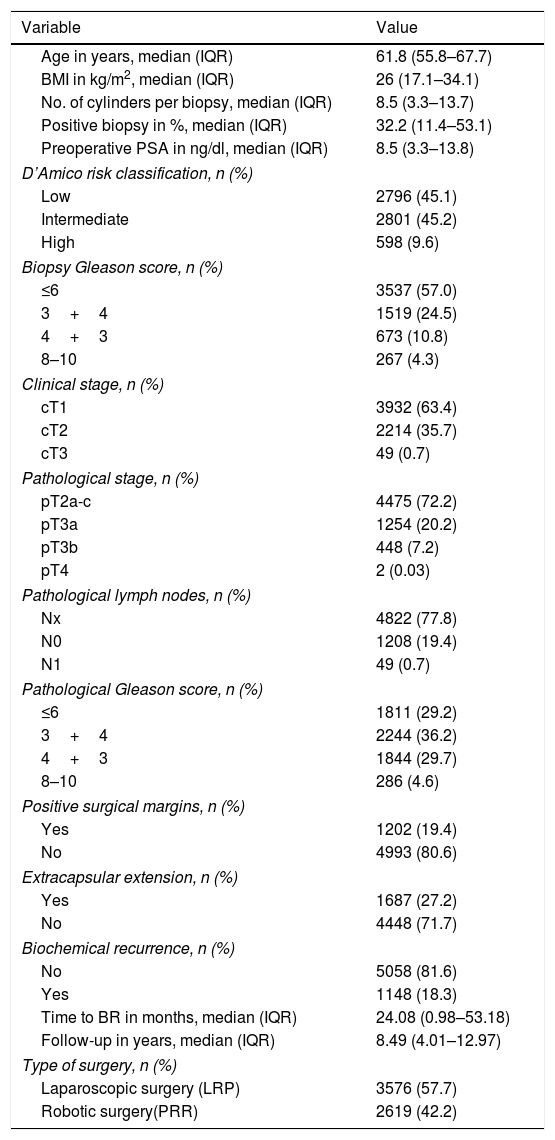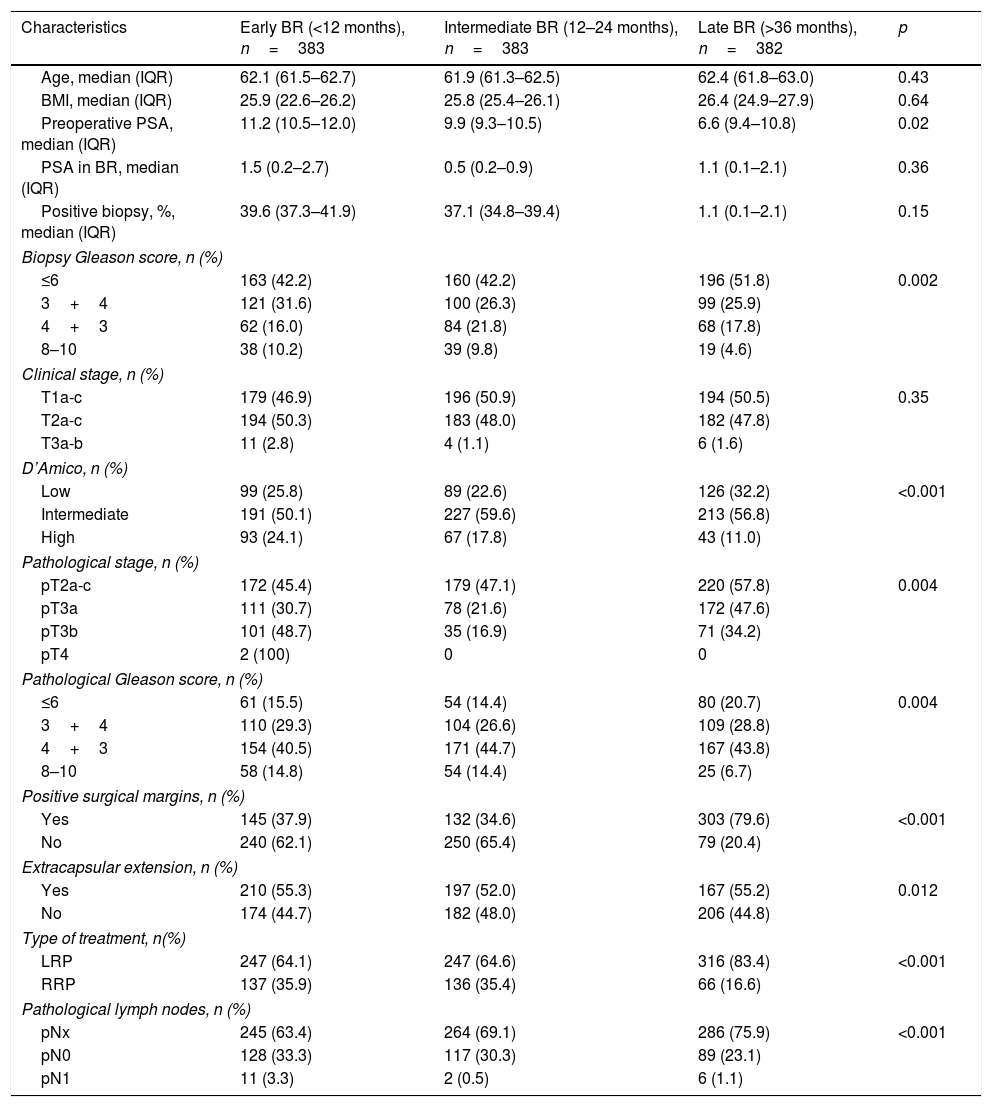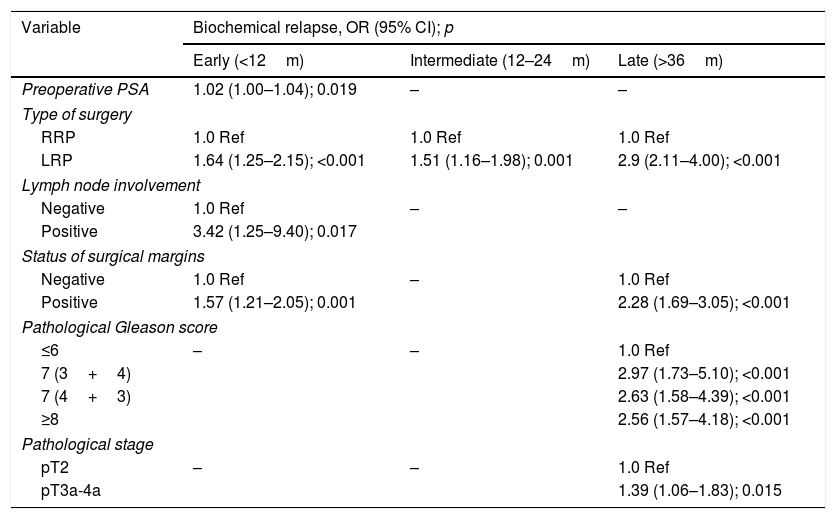To determine the predictors of early, intermediate and late biochemical recurrence (BR) following minimally invasive radical prostatectomy in patients with localized prostate cancer (PC).
Material and methodsWe included 6195 patients with cT1-3N0M0 prostate cancer treated using radical laparoscopic prostatectomy (RLP) and radical robot-assisted prostatectomy at our institution between 2000 and 2016. None of the patients underwent adjuvant therapy. BR is defined as PSA levels ≥0.2ng/dL. The time to BR is divided into terciles to identify the variables associated with early (<12 months), intermediate (12–36 months) and late (>36 months) recurrence. We employed logistic regression models to determine the risk factors associated with each interval.
ResultsWe identified 1148 (18.3%) patients with BR. The median time to BR was 24 months (IQR, 0.98–53.18). The multivariate analysis showed that preoperative PSA levels, lymph node invasion, positive margins and RLP are associated with early recurrence (p≤0.029 for all). Laparoscopic surgery was the only predictor of intermediate recurrence (p=0.001). The predictors of late recurrence included a pathological Gleason score ≥7, stage ≥pT3, positive margins and RLP (p≤0.02 for all).
ConclusionsThe patients with high-risk prostate cancer can develop late recurrence and require long-term follow-up. Identifying patients with higher PSA levels and lymph node invasion has an important predictive role in the first year after surgery. The association between RLP and BR warrants further assessment.
Determinar factores predictivos de recidiva bioquímica (RB) temprana, intermedia y tardía después de prostatectomía radical mínimamente invasiva en pacientes con cáncer de próstata localizado.
Material y métodosSe incluyeron 6.195 pacientes con cáncer de próstata cT1-3N0M0 intervenidos mediante prostatectomía radical laparoscópica (PRL) y robótica en nuestra institución entre 2000 y 2016. Ninguno recibió tratamiento adyuvante. La RB se definió como PSA≥0,2ng/dl. El tiempo hasta RB se dividió en terciles para identificar variables asociadas con recidiva temprana (<12 meses), intermedia (12–36 meses) y tardía (>36 meses). Se utilizaron modelos de regresión logística para determinar los factores de riesgo asociados en cada intervalo.
ResultadosSe identificaron 1.148 (18,3%) pacientes con RB. La mediana de tiempo hasta la RB fue de 24 meses (RIQ: 0,98–53,18). El análisis multivariable mostró que el PSA preoperatorio, la invasión ganglionar, los márgenes positivos y la PRL se asociaron con recidiva precoz (todos p≤0,029). La cirugía laparoscópica fue el único predictor de recidiva intermedia (p=0,001). Los predictores de recidiva tardía incluyeron un score de Gleason patológico ≥7, estadio ≥pT3, márgenes positivos y PRL (todos con p≤0,02).
ConclusionesLos pacientes con cáncer de próstata de alto riesgo pueden desarrollar recurrencia tardía y precisar un seguimiento a largo plazo. La identificación de pacientes con mayor PSA e invasión ganglionar tiene un importante papel predictivo en el primer año tras la cirugía. La asociación entre PRL y RB merece una evaluación adicional.










